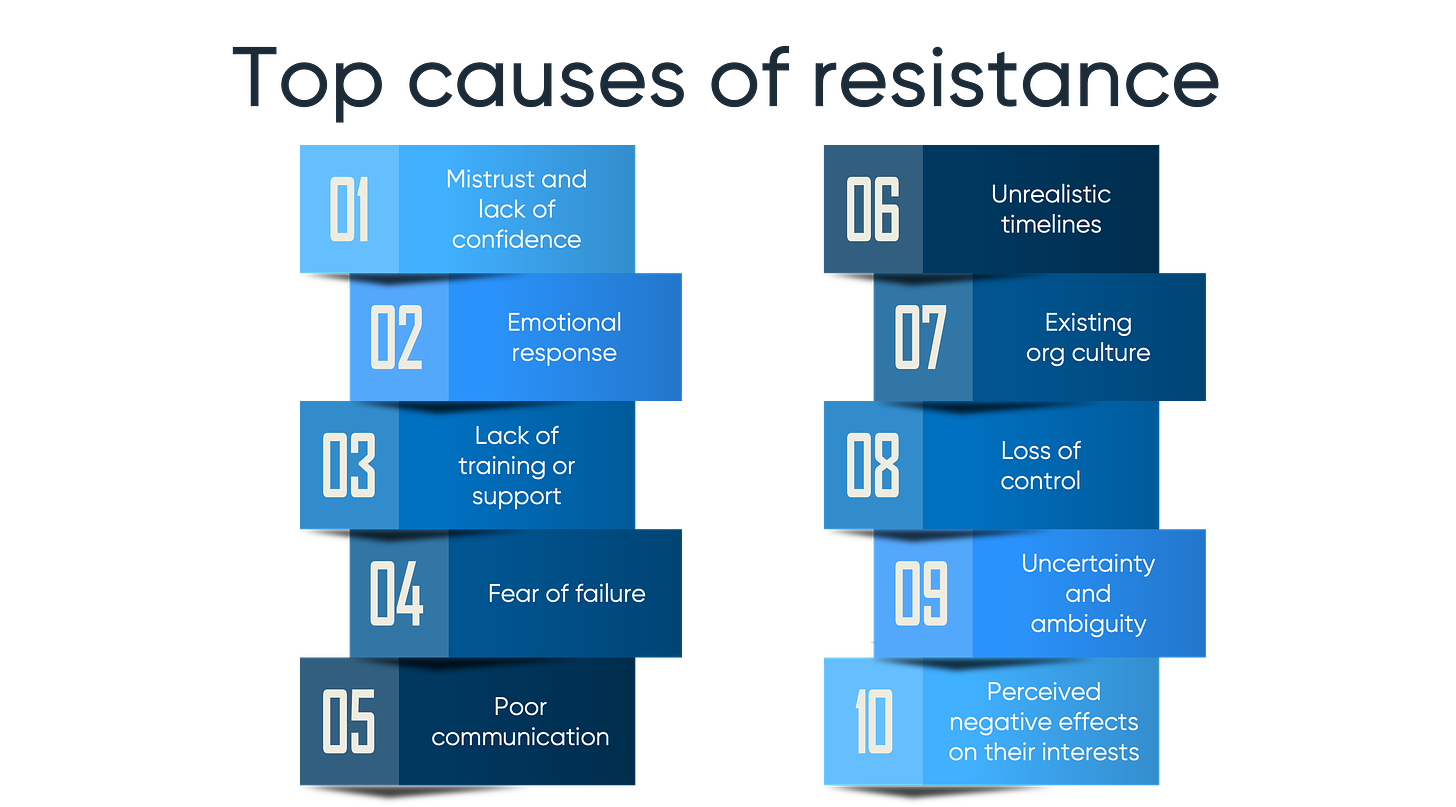The path to success change is often strewn with obstacles, primarily due to resistance from within the organisation itself. Understanding these barriers is crucial for any VP of Delivery aiming to lead an agile transformation successfully. Let's explore the ten common sources of resistance and discuss the importance of addressing these challenges to ensure successful leadership and project implementation.
1. Mistrust and Lack of Confidence
Resistance can originate from a deep-seated mistrust of management. This scepticism may develop if there's a history of unfulfilled promises or failed initiatives, leading team members to doubt the sincerity or capability of leaders to effectively implement Agile. Such mistrust can severely undermine the adoption process from its inception.
Resistance may also stem from a foundational mistrust or lack of confidence in the new system. Team members might doubt whether Agile can deliver its promised benefits, especially if past initiatives have failed. This can undermine the adoption process from the start.
2. Emotional Response
Change can trigger emotional responses such as anxiety and defensiveness. For some, the shift to Agile methods feels like a departure from the comfort of established routines, leading to emotional resistance.
3. Lack of Training or Support
Without adequate training or support, teams can feel ill-prepared to transition to Agile frameworks. This lack of preparedness can result in resistance, as team members feel overwhelmed by the new demands placed on them.
4. Fear of Failure
Fear of failure is a significant barrier. Agile, which often requires fast-paced decision-making and frequent iterations, can seem intimidating to those accustomed to more traditional, meticulously planned approaches.
5. Poor Communication
Resistance can also arise from poor communication about the changes being implemented. If team members do not understand the what, why, and how of the transition, their commitment to the initiative can wane.
6. Unrealistic Timelines
Setting unrealistic timelines for adoption can frustrate teams and create resistance. Agile transformations take time, and expecting quick changes can lead to disappointment and opposition.
7. Existing Organizational Culture
An organisation's established culture can be resistant to agile, which often requires a more collaborative and less hierarchical approach than traditional models.
8. Loss of Control
Agile distributes decision-making more broadly across teams. Individuals who are used to having control may resist feeling that they are losing their grip on the decision-making process.
9. Uncertainty and Ambiguity
Agile development, with its iterative nature, can sometimes seem less structured than traditional projects. This uncertainty and ambiguity can be uncomfortable for those who prefer clear, long-term planning and guaranteed outcomes.
10. Perceived Negative Effects on Personal Interests
Finally, resistance may come from a belief that the agile transformation will negatively affect personal interests. For example, team members might worry about job security or changes to role definitions.
The Importance of Addressing Resistance
Addressing these sources of resistance is not just a hurdle to overcome; it is a critical component of leadership in driving Agile adoption. Effective leaders must engage empathetically with these concerns, offering clear communication, adequate training, and support to ease the transition. They must also foster an environment where failure is seen as a learning opportunity rather than a setback.
By understanding and mitigating these resistances, leaders can ensure that the adoption of Agile is as smooth and effective as possible.
To successfully navigate this, leaders must be proactive, responsive and committed to guiding their teams through the complexities of change. The journey might be challenging, but the destination—a more dynamic, responsive organisation—is undoubtedly worth the effort.


